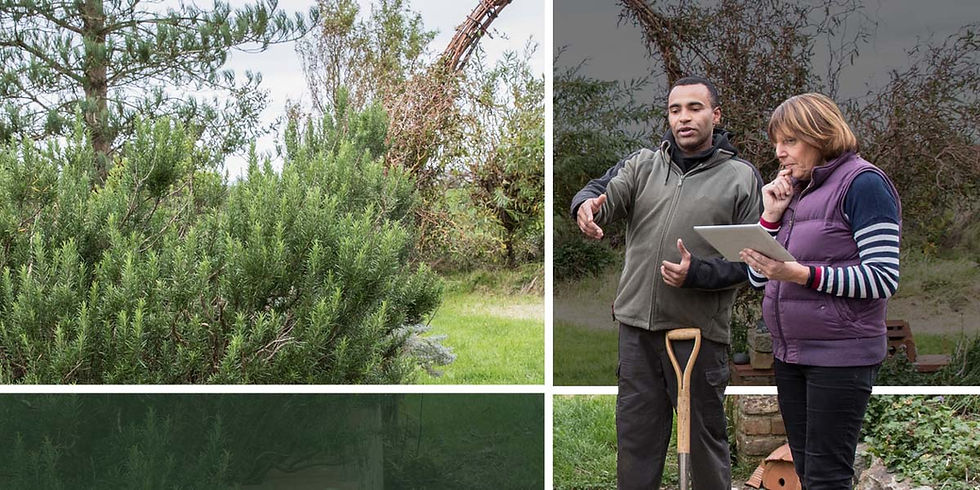Tips for composting Fall leaves
- Rooted in Nature

- Oct 18, 2021
- 2 min read
Updated: Apr 30, 2024

A yard of fallen leaves may seem like a mess. But hidden in all that decomposing foliage is the perfect organic matter for a great pile of compost. So this year, instead of putting fall leaves in a garbage bag and sending them to the dump, put them to use!
Big or small? Size does matter!
The size of a leaf pile can make a big difference in how fast leaves decompose. Keeping each pile around 3 feet x 3 feet x 3 feet will provide enough material for a healthy compost without the pile being too large for its own good or too small to maintain heat.
The best place to site a pile is in a shaded area with good air flow and decent cover. If you have a lot of leaves to compost, simply make additional piles and add new leaves as they fall. The more compost the better!
Enriching your pile
Composting leaves in fall is especially easy, as there is a mix of fresh and dying material to balance the nutrient content. Many composting guides say to add lawn fertilizer to a compost pile to help balance the high amount of carbon present in the decomposing leaves with nitrogen. Instead, you can achieve this balance by simply adding freshly fallen leaves to a pile of older ones in equal layers.
You can also add fresh material like food waste (except meats and oils), grass clippings, and branches to supplement the dead leaves as needed. If possible, try to use equal parts fresh and dead material. So, avoid the fertilizer and put old clippings and food waste to use along with the leaves.
But note that you shouldn't add animal products to the pile, and this includes grease, bones, and meat. These items will attract pests, and they take much longer to decompose. Also, never add plants that have been sprayed with weed killers (not that you would ever use those, right?).
Enclosing your pile
Creating a proper enclosure for your pile of leaves isn't strictly necessary, but it can help to expedite decomposition, maintain heat, provide protection from the elements, and promote a healthy compost. You can buy an enclosure or make a simple box frame out of wood. At the very least, putting a tarp over the pile can be a quick fix for the compost. Just make sure to air it out.
Maintaining your pile
Proper maintenance of the leaf pile will ensure that it progresses into a great pile of compost. The pile should be moist but not soaked and warm but not hot. So, add water or provide shade if necessary.
Turn the pile to aerate it and mix it occasionally to encourage all parts to decompose. After a few week, once the pile starts to really break down, add less fresh material to allow it to finish its cycle.
Even during the depths of winter, the center of a compost pile can remain warm and active if properly maintained. And with proper care, the compost should be ready by late spring! To discuss all things lawn and garden, please contact us at 443-846-0199 or info@rootedinnaturemd.com.



Comments